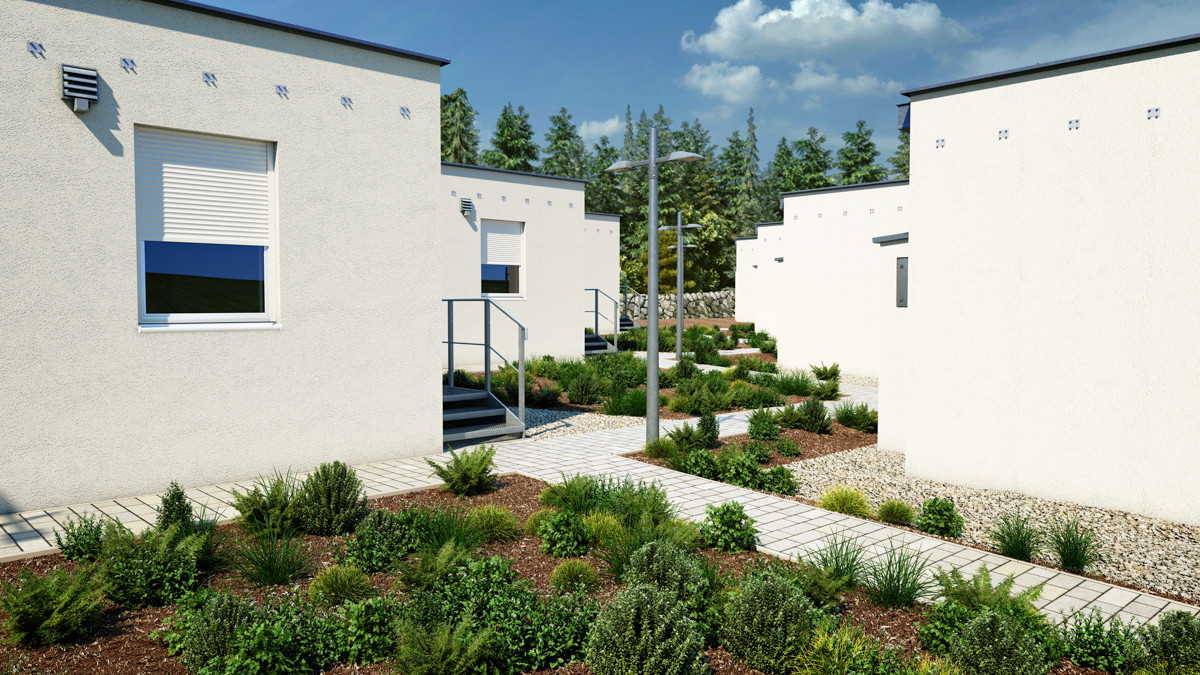Opening or closing blinds can be a discussion that separates spirits. Do we have to sacrifice light to escape the heat in the summer or is it up to the construction type of the house if shutters are needed in the first place?
On a hot summer day our research team ventured out to the VIVA park in Wopfing, Austria to measure the effect of blinds on the indoor temperature. All tested houses were insulated and built with different construction material but are equipped with the same external shutters.
At first the team closed the blinds in all buildings resulting in very low indoor temperature fluctuation across all tested houses. The most consistent temperature was measured in the Wilhelminian style house with 51 cm full brick walls followed by the 25 cm brick construction and concrete. The highest temperature fluctuation (1°C) was measured in the Wooden frame construction.
The situation changed as soon as the shutters were opened. The houses heat up strongly in the midday and afternoon hours due to the sun's rays. This resulted in intervals of approx. 6 hours at which the room temperatures were at a constantly high level (between 23 and 26°C). The fluctuations in indoor temperatures during the day were around 2°C for all construction methods.
The research shows that closing shutters has a positive impact on the room temperature in summer even for rooms with small windows. Since only insulated houses were compared it was proven that the more solid the construction method the cooler the indoor temperature.
Concrete and full brick houses were – on average – cooler by 2°C than wooden frame constructions. For the best protection against heat choose a solid construction material, apply insulation and provide as much shade as possible.
Compare all data from the VIVA research park.

